Update 05.25.2018 -- Run 9 Embedding: Closure Tests (R = 0.3, Charged)
Below are some closure tests using the response matrices from the Run 9 dijet embedding. I had previously shown that the RFF and FF responses are consistent with each other, so you should be able to unfold the RFF detector-level spectrum back to the particle-level spectrum using the FF response matrix and vice versa. So to check this and that the unfolding procedure behaves as expected, I tried unfolding the RFF, FF, and the combined (labeled RFF+FF below) detector-level spectra back to their particle-level counterparts using the three different response matrices.
The title of each plot indicates which response matrix was used, the unfolding algorithm used, and the regularization parameter used. I somewhat arbitrarily limited the resolution parameter to be between 1 and 5 since this is typically adequate for unfolding actual data. Below I only show the "best" unfolding, which is determined to be the regularization parameter which gives the lowest chi-square between the detector-level and backfolded spectrum.
RFF Spectra:



FF Spectra:
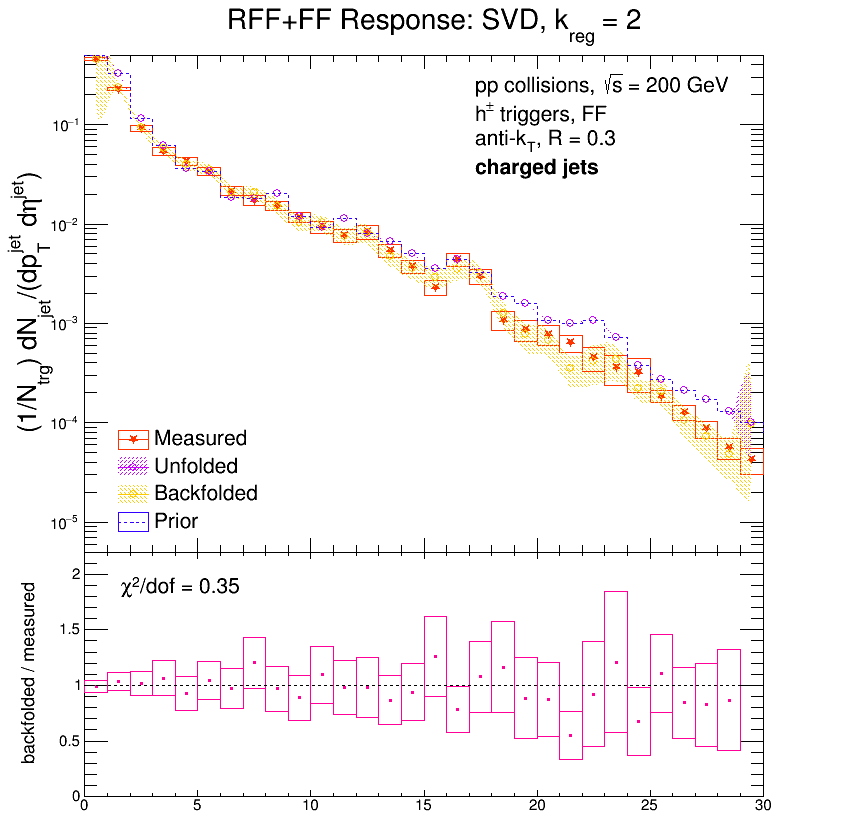
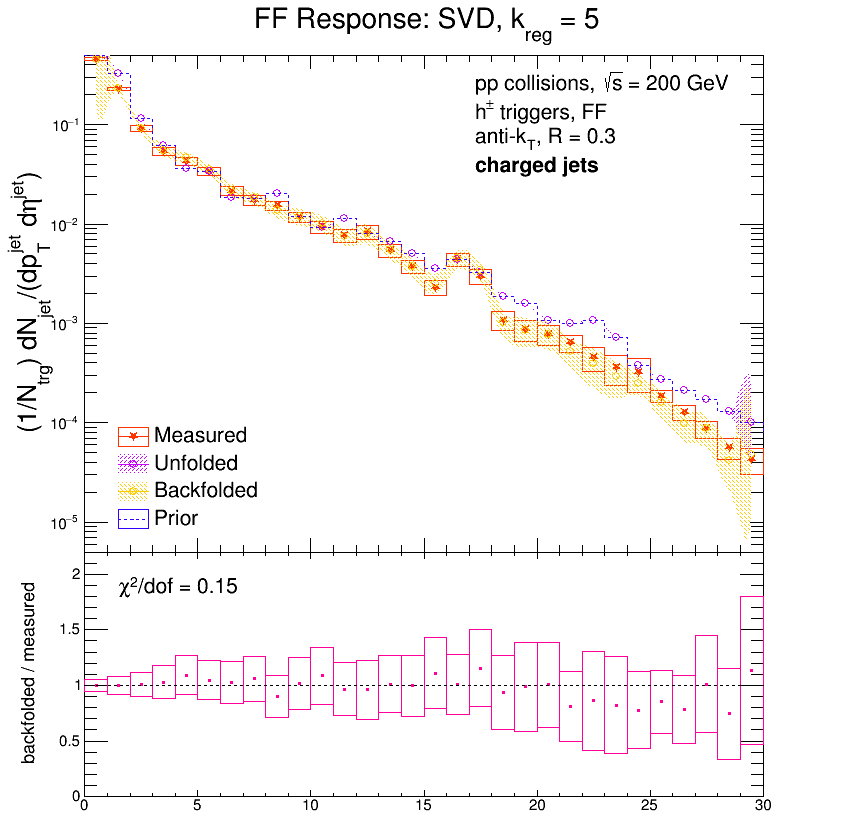

RFF+FF Spectra:
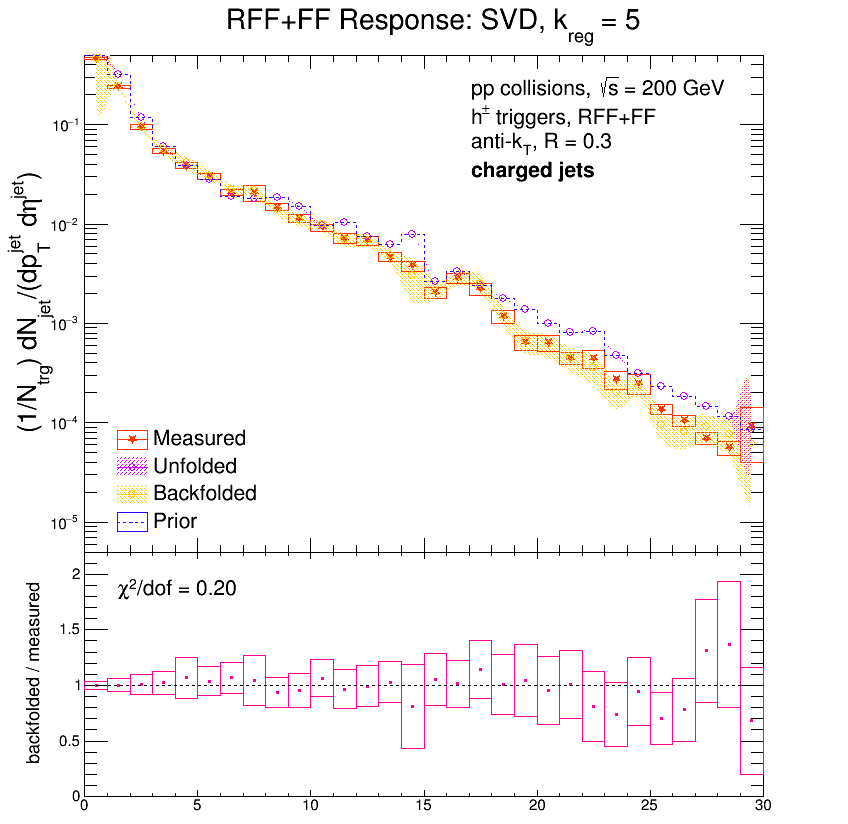
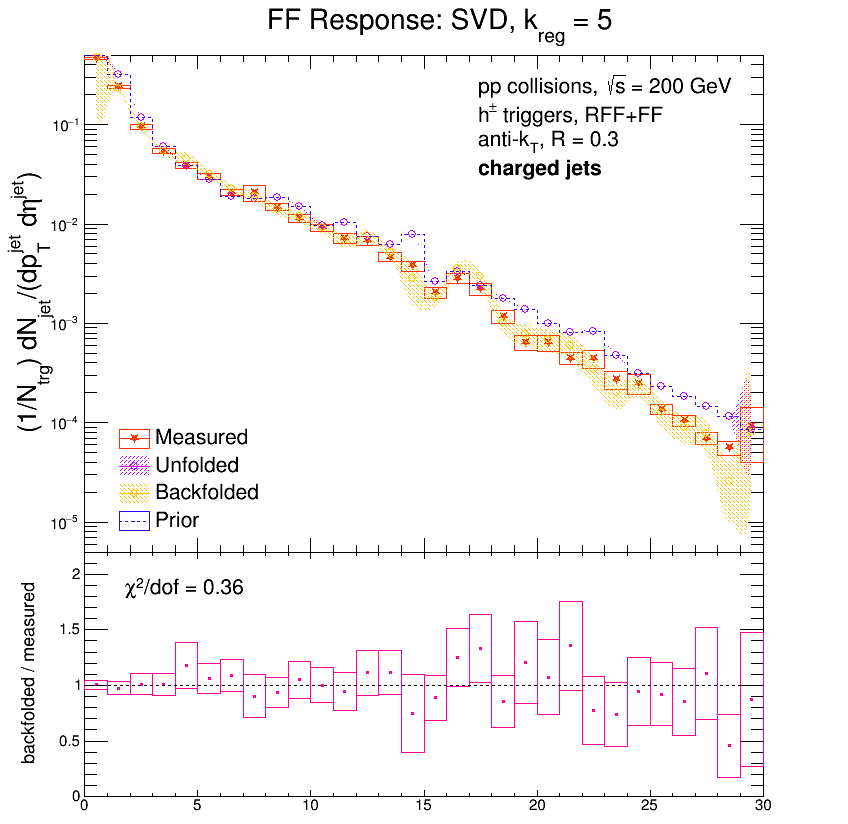
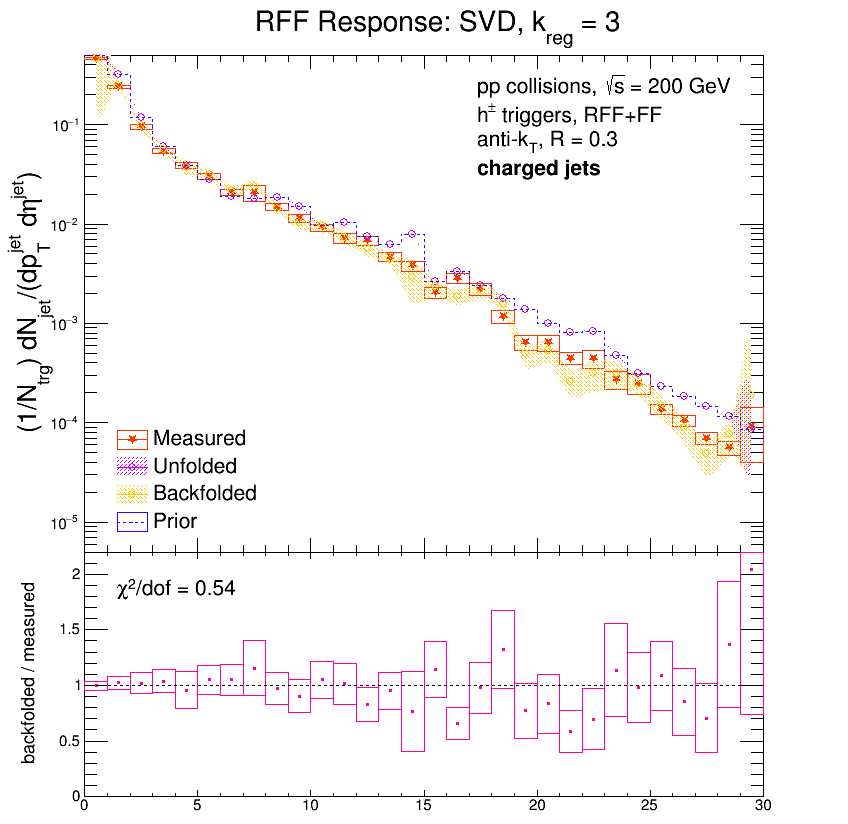
Nominally, I should also check the Bayesian algorithm. But my code wasn't cooperating for reasons that, at the time of this writing, I'm not sure of. As I move forward, I'll double check the Bayesian algorithm as well (especially since there's nothing in our scenario which would prevent Bayes from working...)
Either way, below are the response matrices used. These have been normalized properly, i.e. each bin in particle 'pT' is normalized to give an integral of unity. And I have attached all the relevant ROOT files as a zip file.

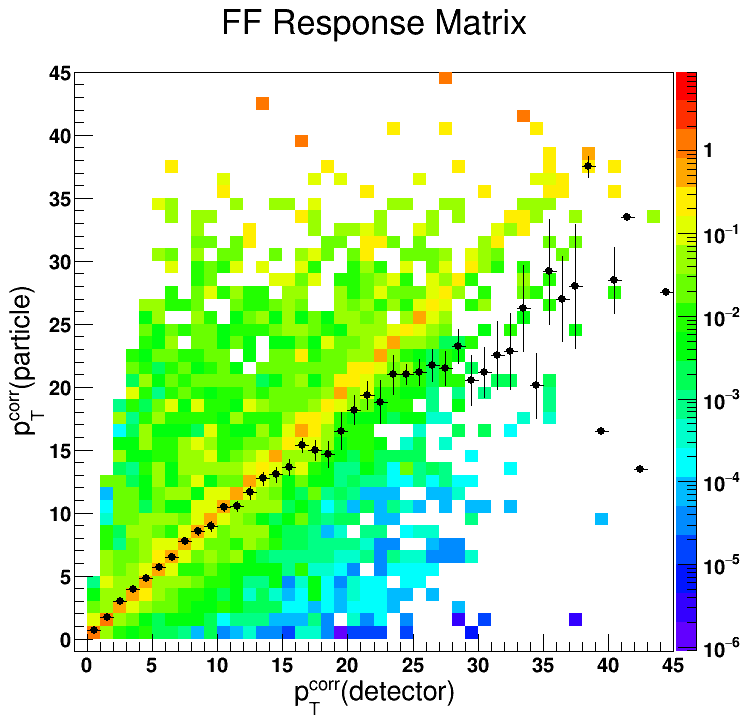
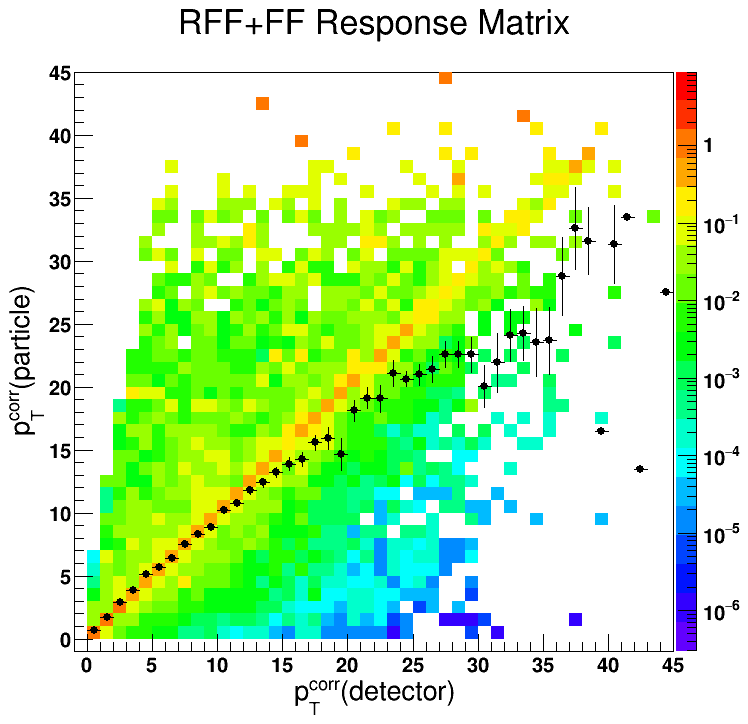
Update [05.30.2018]: The reason why the bayesian algorithm wasn't working (and why there are no errors on the unfolded distributions) is because I was initializing the response object in RooUnfold wrong.
- dmawxc's blog
- Login or register to post comments
